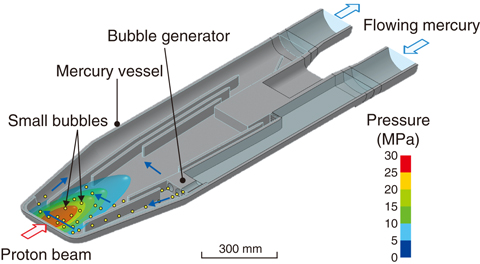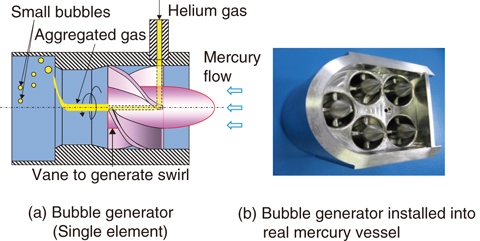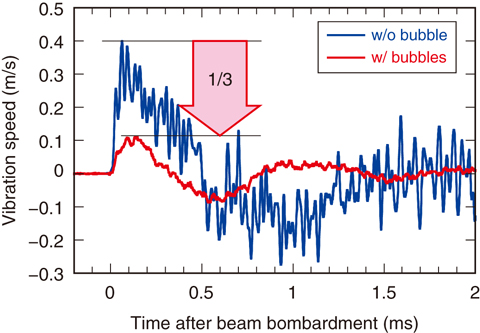
Fig.5-10 Schematic of the initial pressure generated in mercury by proton-beam bombardment

Fig.5-11 Swirl-type bubble-generator

Fig.5-12 Effect of small bubbles on the pressure load of the mercury vessel
At the spallation neutron source in J-PARC, pulsed proton beams (pulse duration: 1 μs; repetition rate: 25 Hz; Power: 1 MW) are bombarded onto a mercury target to generate neutrons for various innovative material science research purposes. A mercury target contains mercury in a vessel composed of stainless steel such that proton-beam bombardment rapidly increases the mercury temperature, inducing rapid increase of pressure in the mercury (Fig.5-10). According to a numerical simulation, a maximum stress of 150 MPa was generated cyclically and cavitation erosion occurred at the forefront of the mercury vessel owing to rapid increase of pressure. Therefore, it is critical to reduce the pressure generated in mercury to prevent fatigue fracture and mitigate cavitation erosion.
As a countermeasure against this issue, we proposed that pressure can be reduced by absorbing the thermal expansion of mercury by contraction of a helium-gas bubble. Since rapid thermal expansion cannot be absorbed owing to the low natural frequency of a large bubble, it is necessary to generate small bubbles of less than 100 μm in radius in the flowing mercury.
We first attempted to generate bubbles by injecting gas into mercury through a narrow needle. However, gas adhered to the surface of nozzle because of the poor wettability of mercury to steel, resulting in a generated bubble size reaching several mm. Then, we developed a novel swirl-type bubble-generator (Fig.5-11). In this generator, a swirl flow of mercury is generated inside cylinder and the gas aggregated in the center of swirl is broken into small bubbles owing to changes in swirl speed and pressure along the radial direction at the exit of cylinder. We also devised an original idea to arrange several generators in parallel, alternating each swirl direction with the one next to, in order to eliminate mercury swirl downstream the exit, which causes coalescence of bubbles. Furthermore, we investigated the relationship between the vane angle set in the cylinder and the size of the generated bubbles by experimentally considering the discharge pressure of the mercury pump. Consequently, we optimized the geometry of the bubble generator, succeeding in generating small bubbles of 90 μm in radius.
This swirl-type bubble-generator was installed in the mercury vessel. As shown in Fig.5-12, we demonstrated that injection of small bubbles reduced the vibration speed of the mercury vessel to 1/3 of its value in the case without bubbles. This result indicated that the stress generated in the mercury target was reduced to 50 MPa under 1-MW beam bombardment, satisfying the criterion against fatigue fracture (less than 90 MPa).
Toward the realization of the most intense spallation neutron source in the world, we must quantitatively ensure the effectiveness of small bubbles for suppressing cavitation erosion in a real target step-by-step as beam power is increased up to 1 MW.